We're celebrating the artisans, writers, makers, and more who make up the diverse and inspiring world of food.
Today: Raul Martin, the head of Fermín USA -- now in the FOOD52 Shop! -- tells us all about the process of creating an Ibérico ham.
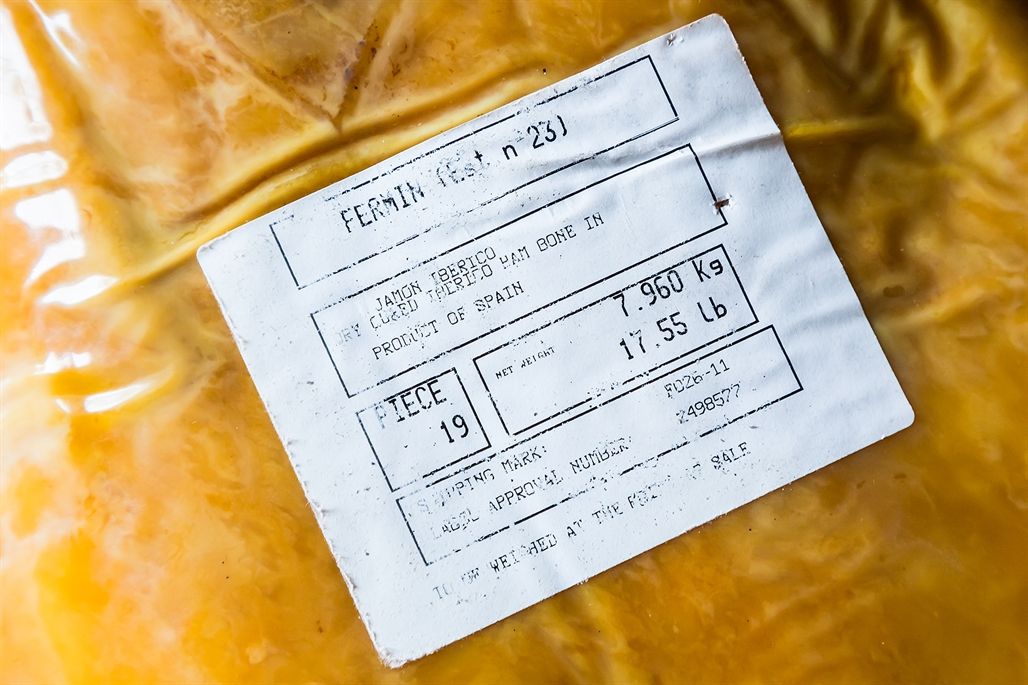
Hello, my name is Raul Martin. I am the grandson of Fermín Martin, the founder of Fermín. I want to tell you about our company -- and to share with you the traditionally cured meats that we are so proud of here in Spain.
Why are Ibérico pigs treated with great reverence in Spain -- and why are we so excited to be the first company to bring them to the United States? A descendent of the wild boar who once inhabited large parts of the Mediterranean, the Ibérico pig's unique ability to store an incredible amount of fat is what distinguishes this pig from other breeds.
In the very small village of La Alberca, where I was born and raised, you will find the great Fermín Ibérico ham. This is a place full of gastronomic traditions that celebrate Iberico and charcuterie products. (In fact, pigs roam freely in its streets, and they are fed by the neighbors.)
Here’s how the Ibérico hams are made.
It begins on our farm. Victor (pictured with piglet) has been working on the Fermín farm for over 15 years. He leads a team that is responsible for caring for the pigs from day one of their lives. After weaning from their mother, at around 4-5 months of age, they are set free to roam on the farm’s pasture and oak groves.
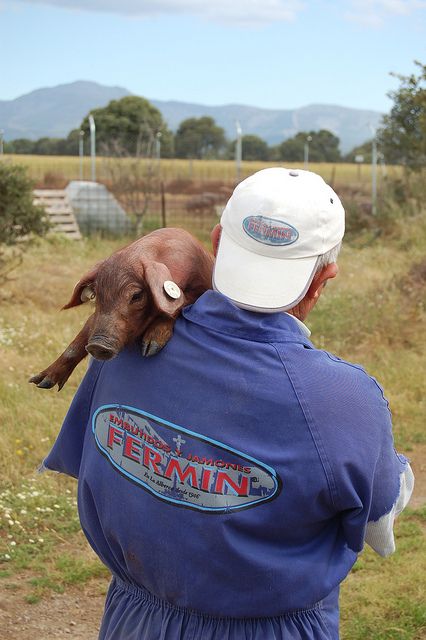
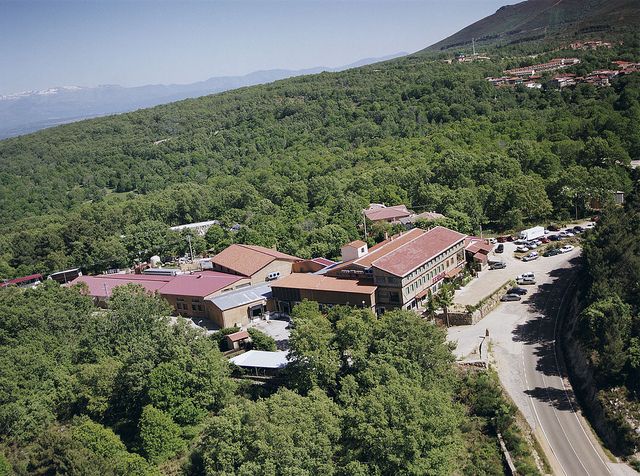
A select number of Ibericos are chosen each year for the ‘montenera,’ a 4-5 month period during which they are released into the Dehesa, a unique Mediterranean forest full of oak trees (the encina, in Spanish) and fallen acorns (bellotas). It is a rule that each pig is given at least one acre of space. During this period, the pigs double their size and reach 400 pounds. Despite being free to roam the forest, this animal is so valuable that “porqueros,” men in charge of keeping an eye on the Ibérico pig, are needed -- to prevent it from becoming damaged or stolen!
Then the pigs are brought to Fermín, in La Alberca, which is to this day the only USDA-approved slaughterhouse in Spain. Surrounded by mountains, and with a low-humidity climate, Fermín is able to follow the same traditional recipe that has been used for generations.
After the pigs are slaughtered, the choice cuts are salted with sea salt in humidity-controlled chambers for 10-15 days, depending on the size of the piece. At the end of this, the salt is gently washed off.
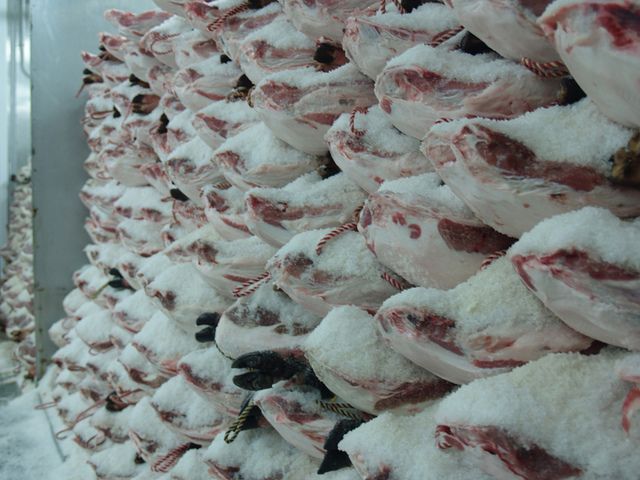
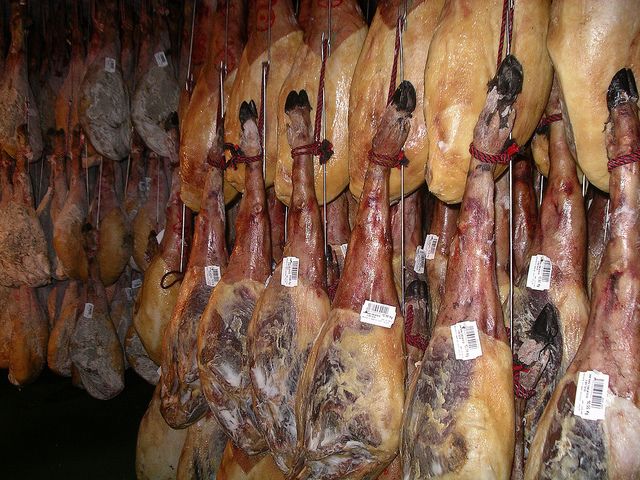
After being salted, the hams are hung up to cure. Curing allows for the ham to develop its complex texture, aroma, and taste. The hams are monitored every day to guarantee that the curing is taking place evenly throughout the meat. Curing takes anywhere between 2-4 years depending on the size of the legs.
Our trusted plant manager, Miguel, has worked in the curing rooms of Fermín for over 20 years. He directs a team that determines when the curing process is complete. This begins with the cala, a piece of beef or pork bone used as a tool to check on the ham during the curing process. The thin bone is quickly inserted into the meat and pulled out. The calas are very porous and they capture and release odors quickly. This means that Miguel and his team can capture the smell in rapid succession without having to wait long for the scent of one test to dissipate before moving onto to check the next ham.
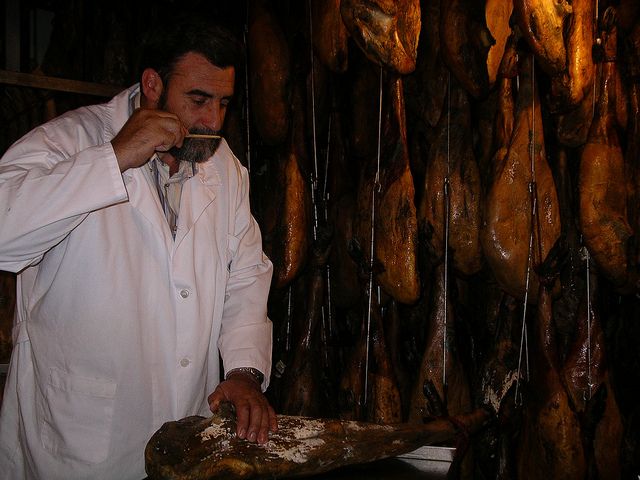
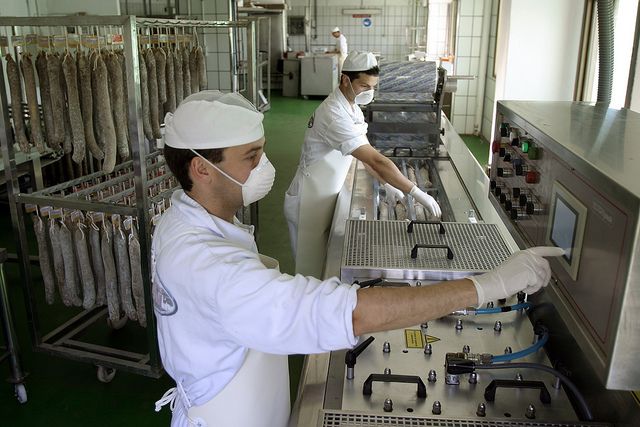
The last phase of the production involves wrapping and labeling the hams for their journey around the world, which could be anywhere from the Far East to the U.S.
Our special hams have one last thing that sets them apart from other cured hams: it is tradition to slice them by hand, and trained slicers called cortadores spend years in training. The profession is highly-esteemed, as they are able to evaluate each ham and decide where to make the proper cuts to achieve the correct amount of fat and muscle in each slice. They are hired for weddings and public events, and now you can become the cortador for your family's celebrations.
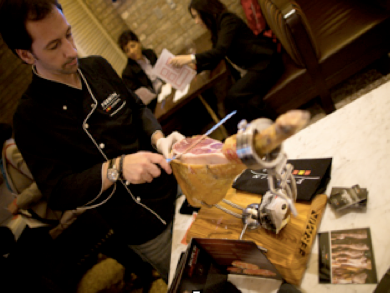
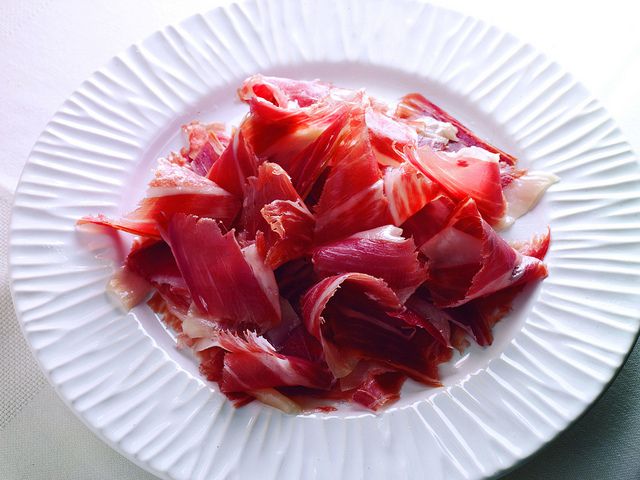
So here I am, doing the carving, but this time on this other side of the Atlantic, in NYC, where I manage Fermín USA’s office.
The result of this process is piece of art, also known as Fermín Ibérico ham!
So, after a long day at work…we deserve this, don’t you think so? Que aproveche!

See what other Food52 readers are saying.